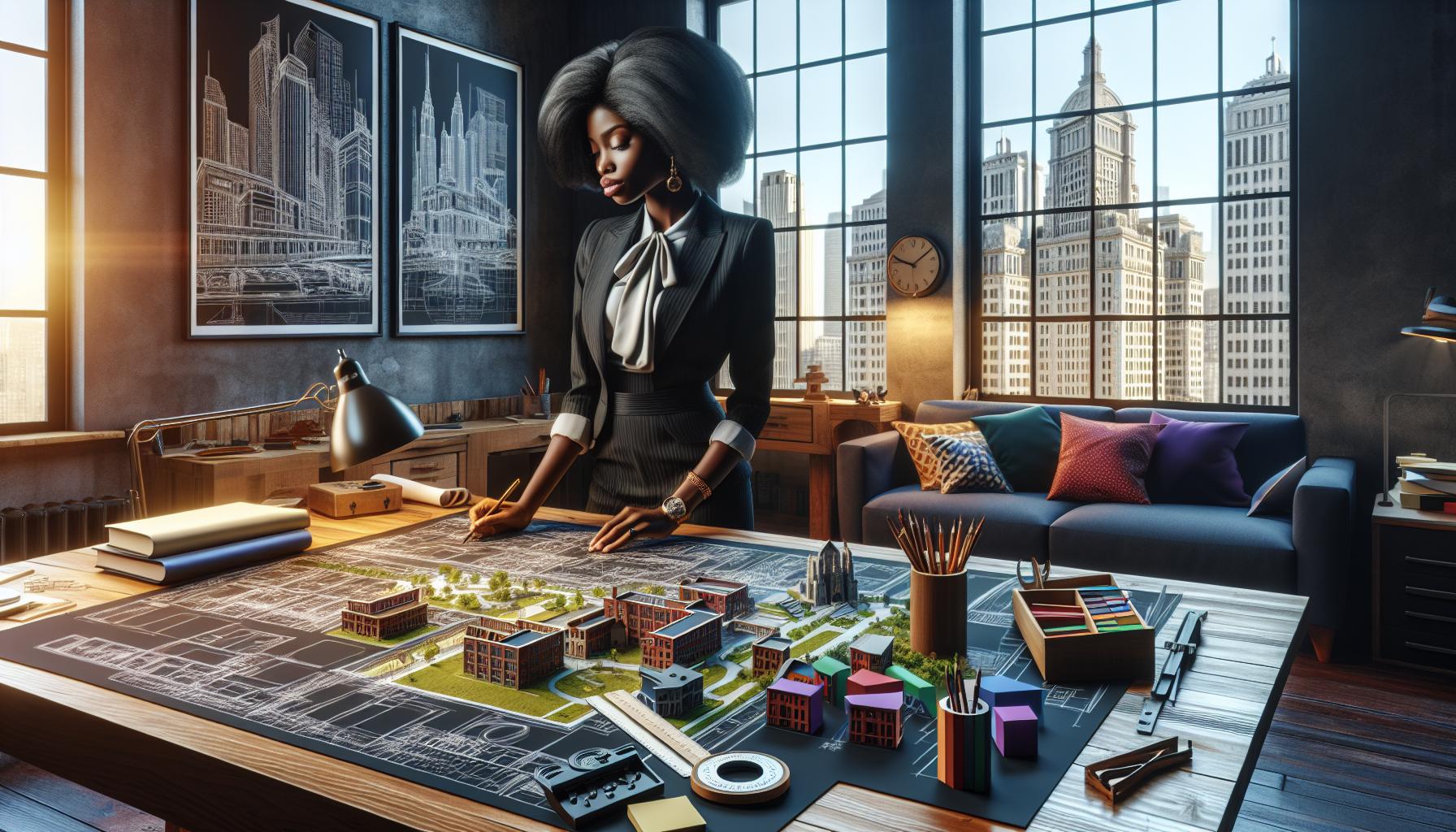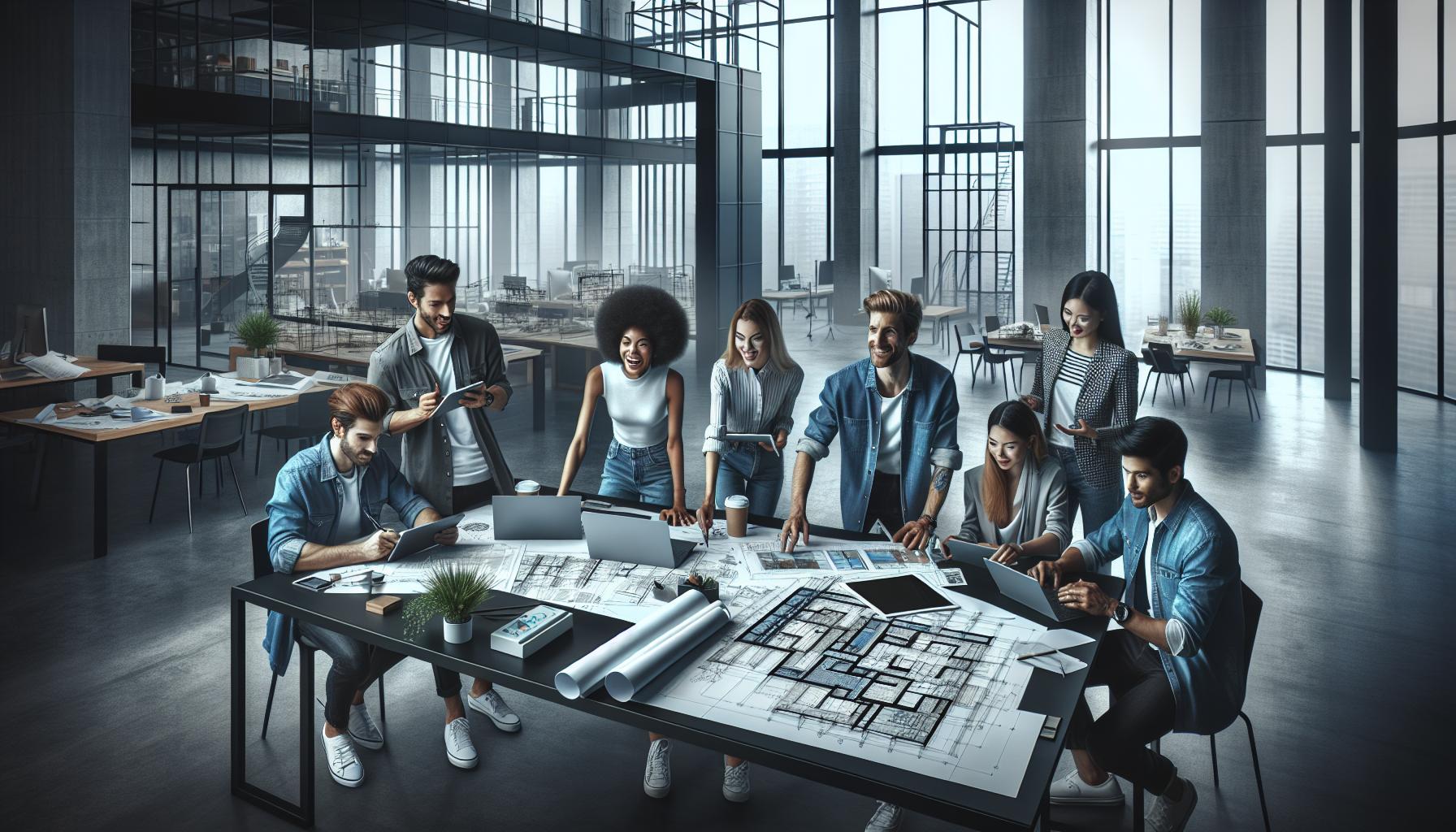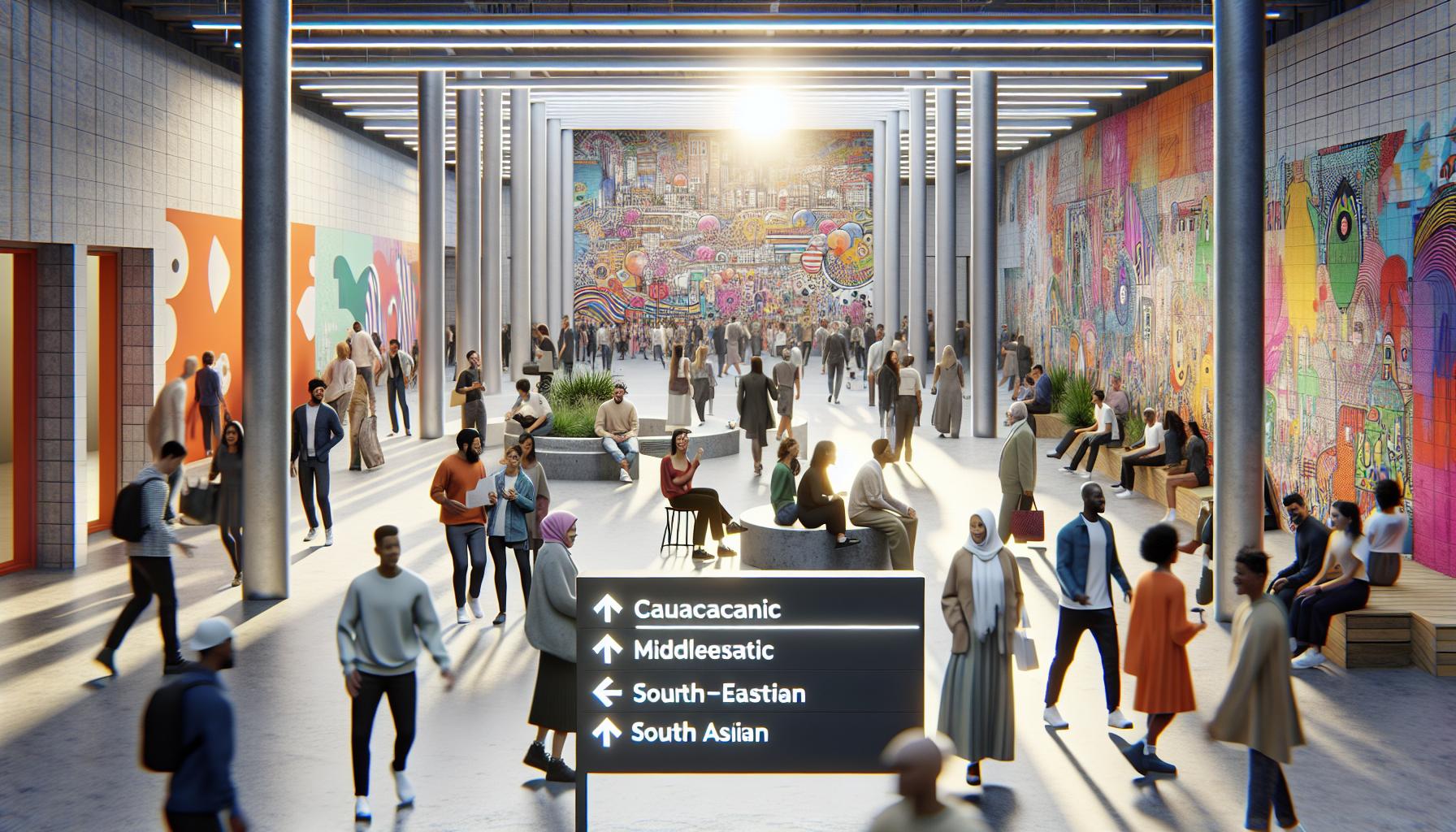In a world where buildings speak louder than words, architectural graphic design is the unsung hero that brings structures to life. It’s not just about pretty pictures; it’s about creating a visual language that guides, informs, and captivates. Imagine walking into a space that feels like it’s telling you a story—now that’s the magic of great design.
Architectural graphic design combines creativity and functionality, transforming ordinary spaces into extraordinary experiences. From eye-catching signage to immersive wayfinding systems, it’s the secret sauce that ensures a building isn’t just a collection of walls and roofs, but a vibrant environment that resonates with its audience. So, if you think graphic design is just for your cousin’s Instagram, think again! This field is where art meets architecture, and the results are nothing short of spectacular.
Architectural Graphic Design
Architectural graphic design integrates visual communication with architectural principles. This discipline focuses on the spatial experience within a building, employing graphics to guide users. Design elements such as signage, wayfinding systems, and murals enhance user interaction and navigation. Creative application of typography and color schemes further reinforces the visual identity of a space.
Effective architectural graphic design creates a cohesive environment. Consideration of materials and textures contributes to aesthetic appeal and functional performance. Graphics often adapt to reflect the cultural and historical contexts of the setting. Engaging storytelling through visual elements transforms static spaces into dynamic environments.
Strategic placement of design elements plays a critical role in user experience. Clarity in information presentation allows users to move confidently throughout a space. Attention to detail ensures that graphic design aligns with architectural intent while addressing practical concerns.
Collaboration with architects is essential for integrating graphics seamlessly into the design. Joint efforts yield spaces that resonate on multiple levels, combining form, function, and visual impact. This partnership leads to buildings that not only look impressive but also enhance the overall visitor experience.
Architectural graphic design emphasizes the importance of human interaction with built environments. Through thoughtful design choices, spaces can evoke emotions, stimulate curiosity, and provide memorable experiences.
Key Principles of Architectural Graphic Design

Architectural graphic design relies on specific principles that enhance user experience and interaction within spaces. Understanding these principles leads to more effective and engaging designs.
Typography in Design
Typography plays a vital role in conveying information and establishing a visual hierarchy. Designers select fonts that reflect the building’s character while ensuring legibility and clarity. Different font sizes and styles guide users through various areas, creating a cohesive look. Effective typography can communicate messages without overwhelming the viewer. It intertwines with architectural elements, producing an inviting atmosphere. By choosing the right typefaces, designers evoke emotions that align with the intended experience of a space.
Color Theory and Psychological Impact
Color theory significantly influences human perception and behavior within environments. Colors can evoke specific feelings, drawing attention or creating tranquility. Warm colors generate energy and excitement, while cool colors promote calmness and relaxation. Understanding cultural associations with color enhances communication and design effectiveness. Designers use color strategically to highlight key features or guide navigation. Effective use of contrasting colors can improve readability and create visual interest. The psychological impact of color aids in transforming an ordinary space into a memorable experience, reinforcing the narrative of the environment.
Tools and Software for Architectural Graphic Design

Architectural graphic design relies heavily on various tools and software that streamline workflows and enhance creativity. These programs not only aid in design creation but also improve collaboration among team members.
Popular Design Software
Adobe Creative Suite stands out with programs like Photoshop and Illustrator, offering powerful features for graphic design. Sketch specializes in UI design, making it a favorite among digital architects. AutoCAD is vital for drafting and technical drawings, providing precision in layout designs. Furthermore, Revit supports Building Information Modeling, allowing integration of graphic elements with architectural plans. Each platform brings unique capabilities, enabling designers to express their vision effectively.
Emerging Technologies in Graphic Design
Augmented reality transforms how designers present their work, allowing clients to visualize projects in real-world contexts. Virtual reality immerses users in 3D environments, enhancing design feedback processes. Machine learning algorithms can analyze user engagement, informing design adjustments. Additionally, parametric design tools facilitate innovative form creation by enabling manipulation of parameters in real-time. These technologies continue to shape the future of architectural graphic design, pushing boundaries in creativity and functionality.
Applications of Architectural Graphic Design

Architectural graphic design holds significant applications across various environments, enhancing user interaction and overall experience. This field’s versatile nature allows it to be effectively employed in both residential projects and public spaces.
In Residential Projects
In residential projects, architectural graphic design plays a vital role in shaping the living experience. Elements like wall art, personalized signage, and color schemes enhance a home’s aesthetic appeal and connection to the owner’s personality. Signage assists guests in navigating through spaces, creating a welcoming atmosphere. Wall murals can create focal points, transforming ordinary walls into statements of creativity. Additionally, cohesive design elements reinforce the home’s identity, ensuring that every visual detail aligns with the desired ambiance. Thoughtful placement of graphic designs directly impacts comfort, thereby improving everyday living for inhabitants.
In Public Spaces
Public spaces benefit immensely from architectural graphic design, which facilitates navigation and engagement. Wayfinding systems serve as essential tools, guiding individuals through complex environments like airports and malls. Clear signage displays critical information, enhancing accessibility for diverse users. Graphic elements like maps and directories foster smooth transitions, making explored areas enjoyable and functional. Murals and public art installations can invoke a sense of community, encouraging interaction among visitors. Each design component serves to reinforce cultural significance, transforming public areas into inviting hubs that resonate deeply with the community. The impact of architectural graphic design in public spaces ultimately enriches the overall experience of those who visit.
Future Trends in Architectural Graphic Design
Emerging technologies play a vital role in shaping architectural graphic design. Virtual reality (VR) and augmented reality (AR) allow immersive experiences, giving users a sense of presence within a space before it’s built. By incorporating these technologies, designers enhance presentations, providing clients with a clearer vision of projects.
Sustainable practices increasingly influence graphic design choices. Designers prioritize eco-friendly materials for signage and graphics, aligning with the broader architectural trend toward sustainability. This approach not only minimizes environmental impact but also resonates with clients who value green initiatives.
Inclusive design also gains traction, ensuring accessibility for all users. By considering diverse needs, designers create environments that cater to various demographics, enhancing the overall user experience. This shift fosters community engagement, making spaces more welcoming and functional.
Data visualization presents another trend in architectural graphic design. Integrating real-time data analytics into design elements aids occupants in understanding their environments better. For instance, smart building displays can showcase energy use, promoting transparency and encouraging sustainable behavior.
Collaboration within multidisciplinary teams becomes increasingly important. Architects, graphic designers, and engineers work together to create cohesive environments that tell a unified story. This collaboration results in innovative spaces where design intentions are realized through synergistic efforts.
Cultural storytelling remains a key focus in design. Designers draw inspiration from local history, heritage, and identity, embedding narratives into the graphic elements of a building. This practice enhances user connection to their surroundings, fostering a sense of belonging and pride.
Rapid advancements in software further enhance workflow efficiency. Tools like Revit and Sketchup facilitate seamless iterations, allowing designers to experiment with forms and patterns quickly. These innovations not only boost creative potential but also streamline project timelines.
Architectural graphic design is a powerful tool that reshapes how individuals interact with their environments. By blending creativity with functionality, it creates spaces that resonate on emotional and practical levels. As technology advances and design philosophies evolve, the potential for architectural graphic design continues to expand.
Embracing sustainability and inclusivity will drive future innovations, ensuring that spaces are not only visually appealing but also accessible and meaningful. The collaboration between graphic designers and architects remains essential for crafting experiences that tell stories and engage users. Ultimately, architectural graphic design is about more than aesthetics; it’s about enhancing the human experience within built environments.



